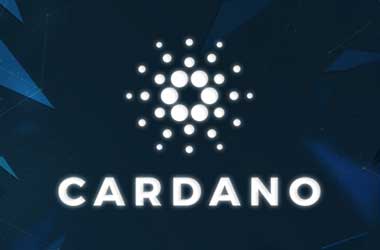

Cardano blockchain, a leading player in the cryptocurrency space, has demonstrated significant growth in both value-locked and transactional metrics during the last quarter. This surge can be attributed to a series of technical improvements and a noticeable rise in developer interest, as highlighted by a recent report from Messari, a prominent analytics firm in the blockchain industry. The report, commissioned by Cardano developer Input Output, provides a comprehensive overview of the second-quarter developments in comparison to the first-quarter figures. It is evident that the ecosystem has undergone notable changes, marked by an array of decentralized applications (dapps) making their mark alongside established entities like the decentralized exchange Minswap.
Growing Blockchain Activity and Ecosystem Expansion
The report underlines that decentralized exchange Minswap experienced the most substantial absolute growth, contributing significantly to the overall surge in Cardano’s blockchain activity. However, it is noteworthy that this growth is not solely attributed to Minswap, as several emerging decentralized applications also played a role in driving the increased engagement levels. The report underscores the dynamic nature of the Cardano ecosystem, characterized by continuous evolution and diversification.
Transaction Metrics and User Engagement
While transaction activity displayed a positive trajectory, the report highlights a marginal decline of 4% in the number of active daily users during the second quarter. This decrease marks the fourth instance of such a drop in address activity over the past five quarters. It is essential to note that the relationship between transactions and active addresses has exhibited a consistent pattern of growth over the last five quarters. This trend suggests a higher level of activity among average users, indicating enhanced participation and engagement. The Transaction/Active Address ratio, a key indicator of user activity, reached 1.19 in the second quarter, reflecting a notable increase of 6.1% quarter-over-quarter and 13.2% year-over-year.
Blockchain Load and Token Locking
Another noteworthy metric that demonstrates the Cardano blockchain’s vitality is the measure of blockchain load. This metric gauges the volume of data contained within blocks over a specific timeframe. The report highlights a substantial increase in the blockchain load, which rose from under 40% in the previous three months to an impressive 50%. This growth signifies the network’s capacity to handle a higher volume of transactions and data, indicating its robustness and scalability. Additionally, it is pertinent to mention that the blockchain load reached its peak at 81% in May, showcasing a period of intense activity and utilization.
Decentralized Finance (DeFi) and Value Locking
Data from DefiLlama indicates a notable milestone in the form of $175 million worth of tokens locked on the Cardano blockchain as of the most recent data. Although this figure marks the highest level achieved this year, it is important to contextualize it by acknowledging that it remains 50% below the all-time peak of $340 million recorded in May 2022. This observation hints at the dynamic nature of the decentralized finance landscape, characterized by fluctuating trends in value locking.
Key Upgrades and Network Enhancements
The surge in Cardano’s blockchain activity can be attributed to several key upgrades introduced earlier this year. Notably, an essential modification aimed at streamlining the blockchain’s performance for network users came into effect in June. This change involved reducing epoch transitions, which are integral to Cardano’s time-based protocol. An epoch encompasses 432,000 slots, with each slot representing one second. During these epochs, ADA tokens are staked, and new blocks are produced on the Cardano network. This adjustment holds the potential to elevate demand for ADA tokens, given the increased attractiveness of block rewards.
Ecosystem Expansion and Interoperability
In March, a noteworthy milestone was achieved through the integration of Milkomeda, a network that establishes connections between blockchains and the Ethereum Virtual Machine (EVM). This development enabled Cardano blockchain users to access EVM smart contracts using any Cardano (ADA) wallet, effectively expanding the ecosystem’s utility and interoperability. The Ethereum Virtual Machine serves as a virtual environment wherein Ethereum accounts and smart contracts operate, facilitating the creation of decentralized applications (dapps) by developers. This integration empowers Ethereum application developers to leverage Cardano’s network and utilize Solidity, the programming language intrinsic to Ethereum’s ecosystem, without the need for additional toolkits or acquiring proficiency in a new programming language.
Conclusion
Cardano’s remarkable growth in blockchain activity and developer interest, underscored by the findings of the Messari report, signifies a significant advancement in the blockchain’s adoption and utility. The Cardano ecosystem’s ability to adapt, improve, and accommodate a diverse array of applications positions it as a noteworthy contender in the ever-evolving blockchain landscape. As technical enhancements continue to shape its trajectory, Cardano’s journey unfolds with potential for further innovation and industry-wide impact.